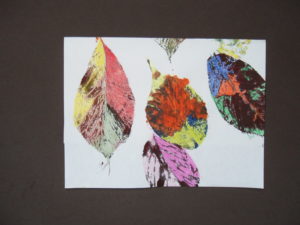
Prints – a craft for children, adults and teens
Crafting = Quality Family Time
Some parents are skilled crafters. Others are doing well to cut paper in a reasonably straight line. No matter which group you fall into, crafting with your kids is beneficial for all involved.
Few things bring families together like crafting. Here are some of the good things that come out of crafting with your kids.
* Crafting builds creativity. Developing minds need a creative outlet, and crafting provides the opportunity for kids to use their imaginations. It helps them learn to solve problems, and it could lay the groundwork for a lifetime of interest in art. For parents, getting creative can help reduce stress and promote using the brain in ways that we don’t have a reason to use it every day.
* Crafting teaches kids to follow directions. This seems like a very basic skill, but we all know adults who can’t seem to follow directions. When kids craft, they learn the consequences of not following directions when their projects do not turn out as expected. They learn that it is important to do things the right way the first time.
* For young children, crafting is fabulous for learning basic skills. Almost any type of craft promotes hand-eye coordination. Kids can also learn to use scissors, measure and do lots of other things they will eventually do in everyday life.
* Parents and children take the opportunity to talk. In our busy lives, it seems that we know less about our kids than earlier generations of parents did. Passive activities such as watching TV do little to encourage conversation. But when you’re crafting together, talking comes naturally. You can seize the opportunity to discuss such things as your child’s interests, his concerns, and how he’s doing in school.
* Crafting is a great way to wind down. It’s wonderful for kids to be active, but there are times when they need to calm down. If you find your child getting agitated or exhibiting a lot of energy near bedtime, try bringing out the craft supplies. Crafting engages kids’ minds, giving them something to focus on and a good reason to sit still for a while.
* Creating things is a confidence booster. Parents who craft regularly know the feeling of accomplishment when a project is complete. Multiply this feeling by ten, and you have a pretty good idea of how your child feels when he makes something. For kids, crafting can help build positive self-esteem.
* Working on a project together is a great way to teach your kids teamwork. This will help them develop skills needed to resolve disputes peacefully and effectively. It will also help them discover their strengths and teach them that doing their best will make the entire project turn out better.
* Crafting creates treasured family memories. The finished product will serve as a reminder of the fun you had making it together.
Crafting as a family provides opportunities for us to interact with our children. It is also a valuable learning experience for them. Don’t worry if you aren’t the world’s greatest crafter. Simply being willing to try anyway is a lesson to your kids in itself.
Crafting = Quality Family Time
Like this:
Like Loading...






